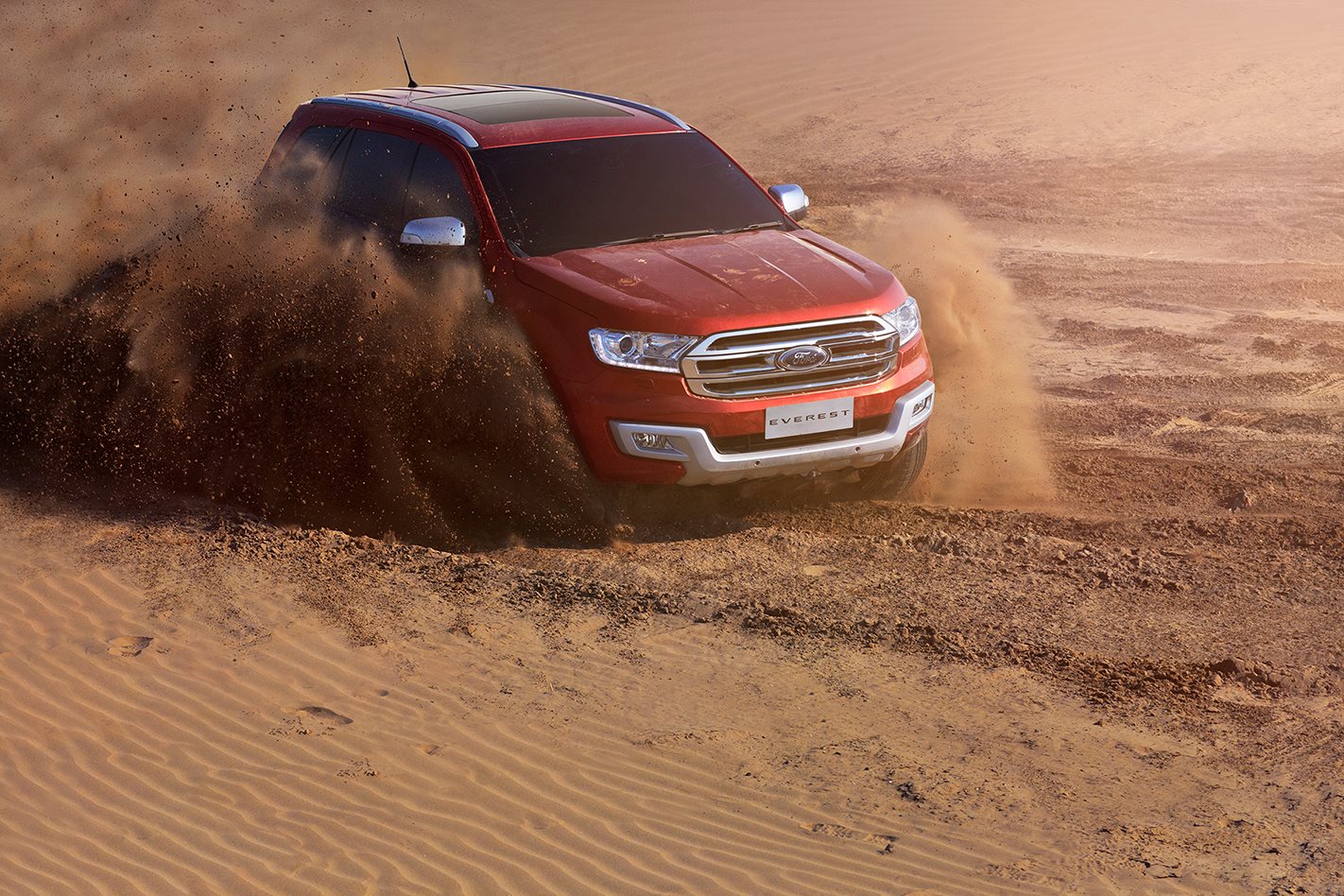MORE details of Ford’s big-shouldered adventure wagon have been revealed, with the Ford Everest seven-seater wagon gaining advanced driver-assist tech from the related facelifted Ranger pick-up, and then some in the war against the Toyota Prado, Holden Colorado and Isuzu MU-X.
Out in September, the Thai-built, body-on-frame, dual-purpose crossover will offer active safety gear including adaptive cruise control, lane-keeping assistance and a driver impairment monitor, as well as blind spot monitoring that sounds an alarm if you’re about to back from a car park into oncoming traffic, automatic parking, and curve control, which alters the throttle and stability/traction controls to help keep the vehicle from going off-piste if a turn is taken too quickly.
To keep the body-on-frame wagon quiet, the Everest will also use active noise cancelling boosted by masses of sound-deadening material throughout the vehicle.
Revised versions of the 2.2-litre four-cylinder and 3.2-litre five-cylinder turbo-diesels serving the Ranger will power the Everest, in 118kW/385Nm and 147kW/470Nm outputs respectively. Though Ford recognises the demand for petrol-powered alternatives, none are in the pipeline.
Only one transmission – a six-speed auto – will be available in rear- or four-wheel-drive configurations, with the latter benefiting from a low-range transfer case, on-demand torque distribution, 225mm of off-road enhancing ground clearance and the ability to wade through 800mm of water.
A Land Rover-style Terrain Management System with four off-road settings was devised for 4WD variants, switching between Normal, Snow/Gravel/Grass, Sand, and Rock.
Steering is via the facelifted Ranger’s electric power assisted rack and pinion system, while the suspension consists of MacPherson-type struts up front and coil springs with Watt’s linkage out back.
Less adventurous buyers might appreciate the luxuries of a dual-pane sunroof, leather upholstery, electrically operated tailgate and power-folding third-row seat – the last two being firsts in the segment, according to Ford.
Also cribbed from the revised Ranger will be the Everest’s horizontal-look dashboard, brandishing an eight-inch touchscreen, Bluetooth connectivity and Ford’s SYNC 2 voice-activated controls.
Finally, folding rows two and three will liberate up to 2010 litres of luggage capacity, with the payload rated at 750kg.
Everest is expected to price from the low-$40,000 mark, stretching to the mid-$60K mark for the highly specified Titanium 4WD.





